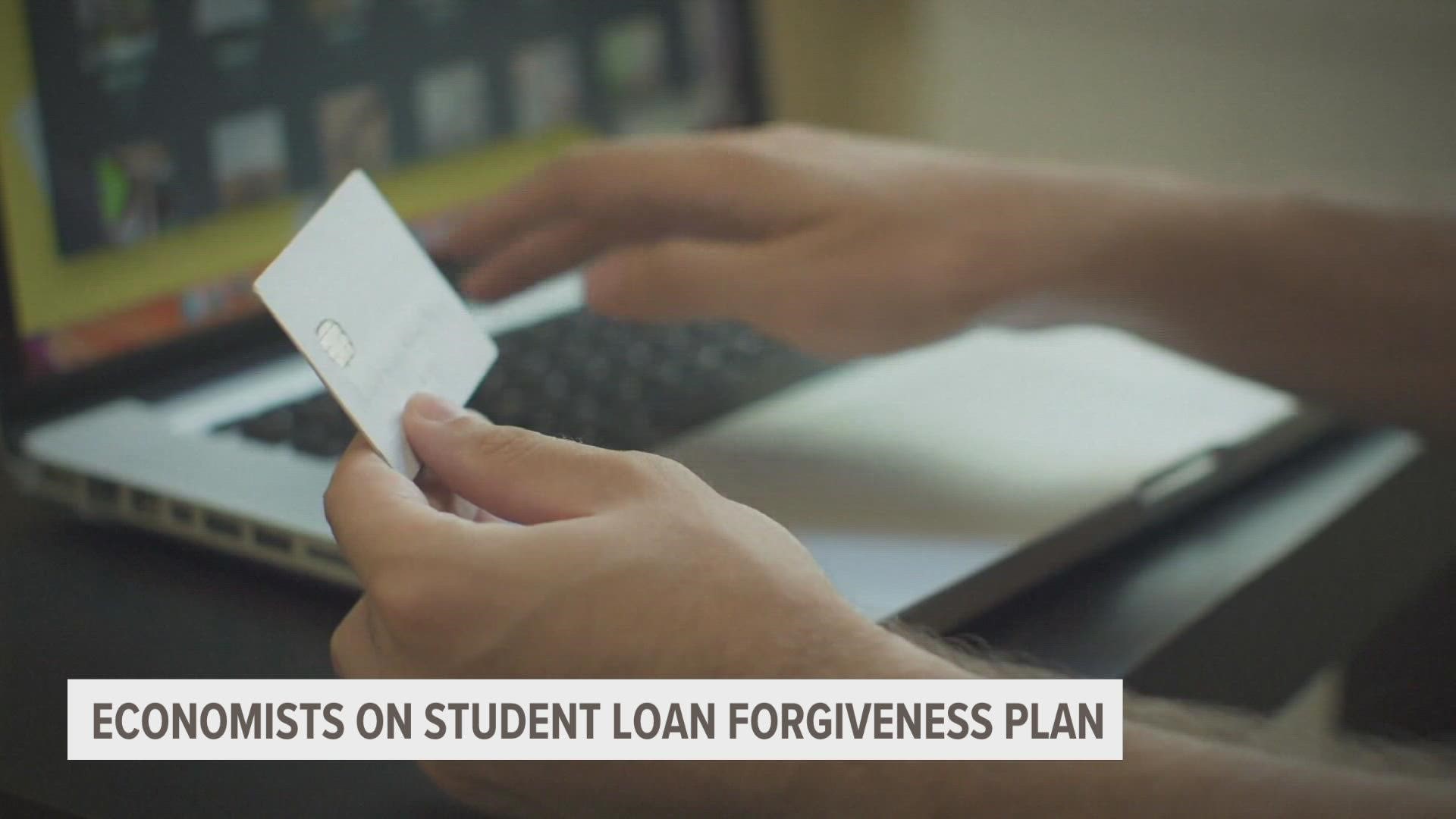MICHIGAN, USA — President Joe Biden announced the cancellation of up to $20,000 of student loan debt for millions of Americans.
The plan calls for $10,000 in debt relief for those making less than $125,000 per year, and that can be doubled for those who got Pell Grants.
The President also extended the moratorium on student loan repayments through the end of the year.
This plan also cuts monthly payments on undergraduate loans in half, capping payments are five percent of a borrower's income.
There's $1.7 trillion in student loan debt owed in the U.S., and West Michigan economists say that forgiving some of that means different things for borrowers and the economy.
The student loan forgiveness plan is estimated to provide relief for 43 million borrowers, and the White House says remaining balances would be cancelled entirely for about 20 million of those borrowers.
Brian Long, Director of Supply Management Research at the Siedman College of Business at Grand Valley State University, says he's worried about the precedent this move sets.
"I'm not sure how much good it's actually going to do the economy in the in the long run," he says. "I'm afraid it starts to look a little bit more like politics than it does actually helping the economy."
While $300 billion in student loan debt could be forgiven, Long says too many forces are at play in our economy for a program like this to change much.
"One of which is, of course, this runaway inflation that we have going for us. Another one, which is the Federal Reserve continuing to raise interest rates, that's going to be a restraining factor as far as the economy is concerned," he says.
Chief Investment Officer at Greenleaf Trust Nick Juhle agrees.
"All we're doing is sort of a neutralization here. So, we're not not putting money into the system, just agreeing not to take it out," he says.
Juhle adds that the economy relies more on consumer spending from the upper class.
"About two thirds, if not a little bit more, of consumer spending is made by people who make more than $75,000 a year," he says. "And by and large, the individuals who are going to have loans forgiven under this plan, make less than $75,000 a year. So, they're not the biggest contributor to consumer spending to begin with."
Juhle says this is good news for student loan borrowers, because they will feel the biggest differences in their pockets.
"If you're trying to keep the economy moving along, keep consumer spending, keep people activated, it'd be difficult to suddenly expect after two and a half year hiatus for everyone to start coming up with that extra $100 a month [in student loan payments] that they've not been accustomed to paying," he says.
With decreased debts, financial experts say people will have more of an opportunity to borrow for a home, car or credit card, as well as add more to their monthly budget.
Mary Jo Terry, managing partner at Yrefy, is urging people to be patient.
"One of the biggest things we're saying is 'don't panic,'" she says. "Everybody's thinking they have to call they have to follow up, they have to fill out a form, they have to do something. So, let's wait for some additional guidance from the U.S. Department of Education."
This plan also raises the income protected from repayment to those making about $15 per hour. It includes forgiveness of loan balances after 10 years instead of 20 years, and it covers a borrower's unpaid interest.
►Make it easy to keep up to date with more stories like this. Download the 13 ON YOUR SIDE app now.
Have a news tip? Email news@13onyourside.com, visit our Facebook page or Twitter. Subscribe to our YouTube channel.

